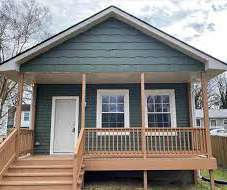What Policymakers Need to Know About New and Evolving Publicly-Driven Housing Development Models in the U.S.
The Stoop (NYU Furman Center)
OCTOBER 3, 2024
State and local governments are exploring ways to take a more direct role in financing, preserving, and developing housing to address the nation’s housing shortage with an array of public development models, according to a new policy brief by the NYU Furman Center and its Housing Solutions Lab. A Decline In U.S.


















Let's personalize your content